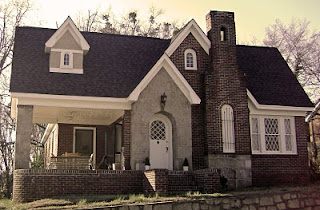Think about it, our homes have evolved hand in hand with our culture. As a migratory species our homes were mobile and temporary. Once we became settlers, they became more permanent too. The size was dictated by our available resources and their design was a reflection of how our families functioned. Families began to labor less and recreate more. Homes began to have spaces dedicated to our leisure rather than our need.
The average house size in 1950 was 1,000 square feet, while the average house size in 2000 had doubled to 2,070 square feet. Likewise, the divorce rate inflated along with the size of homes, quadrupling from the years 1950 to 2000. Is there a connection? Would life be perfect if we all downsized? No, our homes are not solely to blame for the ills of society, but when expertly designed they can help to foster a strong sense of family and encourage neighbors to support one another. Our homes can help or hinder our quality of life. In my opinion, these are some of the elements of a house that transform it into a family home:
The Front Porch: Initially designed as a functional and necessary part of the home, the front porch has been largely eliminated or reduced in modern homes. The advent of central air conditioning made it possible for families to stay in their homes day and night with comfort. There was no need to retreat to the front porch in the late afternoons to escape summer’s sweet heat. We were no longer forced to congregate in rocking chairs and porch swings sharing greetings with neighbors and family members. We were free to stay indoors and sever the ties that bind us to our communities. We became so accustomed to our privacy that we even began building large, ugly fences around our yards just in case a neighbor might be in their yard at the same time we were in ours. Yet we wonder why people can’t just get along. Creative design and integration of indoor and outdoor living spaces is crucial to forming links between ourselves and our community.
The Family Room: Our homes have always been the place where our family comes to gather. A house with a central Family room that encourages congregation, nurtures our need to belong. Most homes have this room. It does not have to be overly large or contain vaulted ceilings and vast expanses of glass, but it does have to be comfortable. It also has to be accessible from the other nurturing spaces of our home, like the kitchen and porch. The beauty of this space can be ruined by too much openness and too much competition. Recent trends in house designs leave all the living spaces open to one another providing visual separation through the use of columns or half walls. The problem with too much openness is that there is no one space where people can gather and connect on a meaningful level without distraction from adjoining spaces. The other problem is too much competition from other gathering spaces such as the media room, playroom, recreation room, music room, computer room, and bedroom. When a home has more gathering spaces than people, there is no need to be together.
The Kitchen: Kitchens have evolved into the heart of a home. They are a magnet for guests and provide ample entertainment for curious toddlers. It only makes sense that the kitchen has become a significant place in our family life. Kitchens serve a very necessary service by allowing us the means to store, cook, and serve our families with basic daily nourishment, but they are also the places where many American families share their heritage and traditions. Passing down family recipes, embellished with stories of the men and women who perfected them in the first place, coupled with exploration of new and exciting dishes or simply popping cookie dough squares from the carton to the oven. All of these activities bring joy to our families and connect us to our roots. Provided with the right design and connection to adjoining spaces, the kitchen can bring a family together like no other place on earth.
As always, I welcome and enjoy your comments. Thanks for reading.


